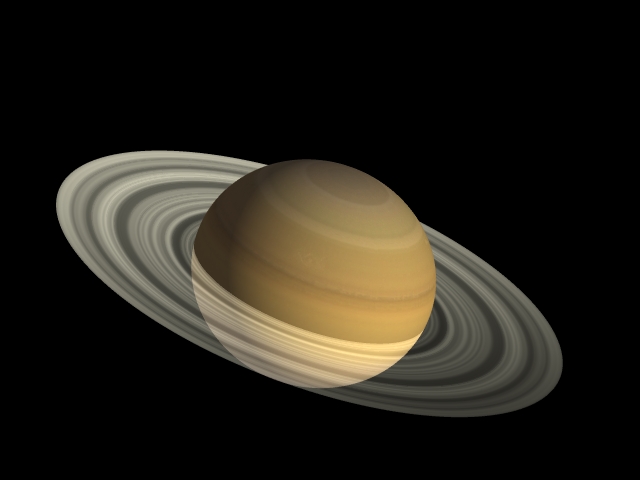How the planets and space were made...
The Planets:
The main scene for our animation is our local solar system. Using our vast knowledge of all things astronomical, we were able to recreate
vast amounts of the solar system with in the tools found in Bryce, and with the help of some very well crafted textures of the planets in
the solar system.

All of the planets were created using sphere objects in Bryce. To add some realism to the animation, all planets are sized exactly as their
real counterparts with relation to one another. The one exception is the sun, since its true relative size turned out to be much too
large. The planets were all sized using "earth dimensions". In this unit of measure, the Earth was assigned an X, Y, and Z size of 1.0.
Each planet was then assigned its size based on its size relative to the Earth. For example, Venus has a size of 0.95, meaning it is
95% of the size of earth, just like the real planet.

Each sphere was assigned a texture of the planet it represents. The textures give the animation a very realistic tone. Once the textures
were applied, the lighting properties of each planet were adjusted to remove spectral lighting and apply appropriate ambient lighting.

To create sunlight, a new sphere-shaped radiant light source was created in the same position as the sun sphere. The lighting created an effect
where the sides of the planets facing the sun are illuminated and the opposite sides are almost completely dark, except for the small amount
of ambient lighting specified earlier.

The model of the solar system was almost complete, except for a few finishing touches. Saturn's rings were created by applying one of Bryce's
supplied textures to a 2D disc object. The disc was then centered in the sphere representing Saturn, and a small tilt was applied to Saturn's
axis. While it may not look exactly like Saturn's ring system, it turned out to be quite impressive.

Finally, a model of the solar system wouldn't be complete without the asteroid belt that resides between Mars and Jupiter. Bryce's rock creation
tool was used to create about 20 different asteroids. These were then grouped together, and duplicated a number of times to create enough
asteroids to partially form a ring in the space between Mars and Jupiter.

Below is a shot of the full solar system model in Bryce. If you like what we have done and if you would like the file to play with and do your own modifications and extensions, feel free to let us now and we will be glad to provide you with a copy.

|